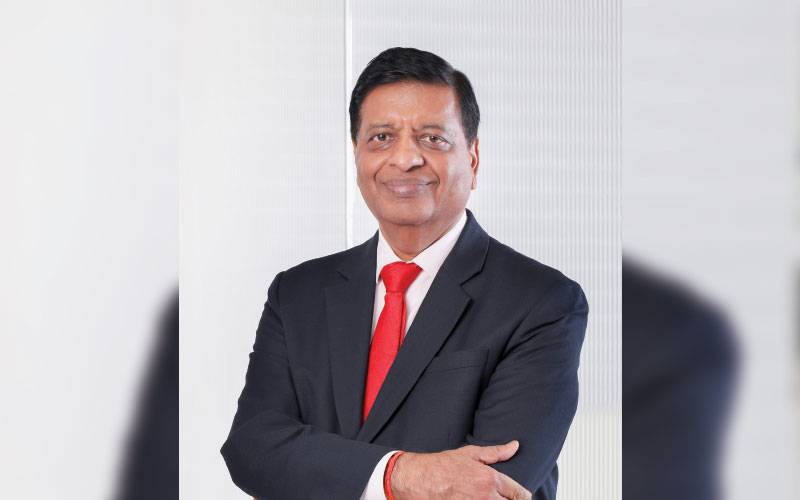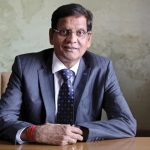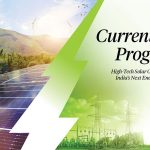KEI Industries is advancing the future of renewable energy infrastructure with high-performance solar cables that comply with rigorous IEC and TUV standards. Designed with Electromagnetic Interference (EMI) shielding, these cables deliver stable performance across hybrid and storage-integrated systems. In an exclusive interview with Wire & Cable India, Mr. Anil Gupta, Chairman and Managing Director, KEI Industries Limited, highlights the company’s continuous investments in advanced testing facilities and sustainable cable innovations, to align with the country’s ‘Viksit Bharat’ vision. The company is also pursuing international collaborations, contributing to India’s position as not just a manufacturing hub, but as a global leader in energy infrastructure solutions.

Wire & Cable India: As India increasingly adopts 1.5 kV DC system architecture in large-scale solar installations to reduce BOS costs and improve system efficiency, how has your company adapted its solar cable design, especially in terms of insulation, thermal performance, and long-term reliability?
Anil Gupta: At KEI Industries, we have proactively re-engineered our solar cable designs to align with the shift towards 1.5 kV DC architecture. Our cables feature enhanced insulation with higher thermal endurance and improved dielectric properties. These advancements allow our products to perform reliably under higher voltages and elevated temperatures, ensuring reduced transmission losses and extended service life. Through such innovation, we are supporting the creation of a ‘Viksit Bharat’, a self-reliant India powered by efficient and future-ready renewable infrastructure.
Watch: Top Cable Companies in India
WCI: What role does electron beam (e-beam) cross-linking technology play in your solar cable manufacturing, and how does it compare to conventional cross-linking methods in terms of performance and cost-efficiency?
AG: Electron beam (e-beam) cross-linking is integral to KEI Industries’ solar cable manufacturing process. It offers superior mechanical strength, enhanced UV and ozone resistance, and long-term thermal stability. Unlike conventional chemical cross-linking, e-beam doesn’t require additives or post-curing, making the process cleaner and more consistent.
While initial setup costs are higher, the long-term durability and maintenance-free operation deliver a significantly better cost-to-performance ratio. This technology is a cornerstone in our mission to deliver high-quality products that meet both domestic and international benchmarks.
WCI: With floating solar and hybrid solar-plus-storage systems on the rise, how are your cables engineered to handle environmental extremes like water submersion, high UV exposure, or EMI interference?
AG: Our solar cables are engineered with robust materials that meet stringent IEC and TUV standards, ensuring performance even in the harshest conditions. For floating solar, we provide water-resistant cables with tight sheathing, superior UV stability, and anti-wicking properties.
Additionally, our cables offer high Electromagnetic Interference (EMI) shielding to ensure stable performance in hybrid and storage-integrated systems. These innovations allow our products to adapt seamlessly to the evolving solar landscape while supporting India’s energy transition goals.
We are witnessing the increased adoption of high-conductivity copper and halogen-free, low-smoke insulation compounds in solar cables.
WCI: Can you walk us through your quality assurance processes, especially with respect to BIS compliance, fire safety, and lifecycle testing under IS or IEC standards?
AG: At KEI Industries, quality assurance is embedded at every stage from raw material inspection to final dispatch. We conduct extensive lifecycle testing, including thermal aging, fire retardancy (FR/FRLS/LSZH), UV exposure, and mechanical impact resistance. Our in-house NABL-accredited lab ensures that every batch meets global standards, reinforcing our brand promise of safety, reliability, and longevity.
WCI: What raw material trends are you observing, particularly in conductor metals and insulation compounds? How are you balancing performance with price volatility?
AG: We are witnessing increased adoption of high-conductivity copper and halogen-free, low-smoke insulation compounds. Given the volatility in global copper prices and polymer availability, KEI Industries focuses on long-term supplier partnerships and volume-based procurement to stabilize costs. Our R&D team continuously optimizes material usage without compromising safety or performance, ensuring competitive pricing while upholding product excellence.

There is a strong and growing interest from global EPCs in Indian-manufactured solar cables. To meet these stringent global benchmarks, we combined scalable production with timely delivery, making KEI Industries a preferred partner for solar infrastructure across borders.
WCI: Are you seeing increased traction from global EPCs or exports for Indian-made solar cables? If yes, what benchmarks or certifications are most demanded internationally?
AG: There is a strong and growing interest from global EPCs in Indian-manufactured solar cables. Our ability to meet these stringent global benchmarks, combined with scalable production and timely delivery, has made KEI Industries a preferred partner for solar infrastructure across borders.
WCI: What are the key challenges solar cable manufacturers in India face today whether it’s certification costs, skilled workforce shortages, or price-driven procurement? How are you tackling them?
AG: The industry faces challenges like high certification costs, unorganized sector competition, and price-sensitive procurement trends. At KEI Industries, we tackle these by investing in continuous skill development, leveraging automation for consistency, and maintaining transparency with our customers about long-term value versus short-term cost.
We also advocate for policy-level incentives to promote ‘Make-In-India’ products that adhere to quality standards, thus contributing to a robust manufacturing ecosystem.
Also Read: RR Kabel Advances Solar Cable Technology with Superior Insulation and AD8 Compliance
WCI: Finally, how is India’s solar cable manufacturing, especially in terms of material technology, certifications, and testing infrastructure, as compared with global benchmarks like those followed in Europe, the U.S., or East Asia? What areas still need improvement for India to become a global supply hub?
AG: India has made significant strides, especially in terms of technology adoption, production capacity, and export readiness. However, areas like advanced testing infrastructure, faster certification processes, and government-backed R&D clusters still need strengthening.
At KEI Industries, we are committed to bridging this gap through continual investment in testing labs, international collaborations, and innovation in sustainable cable technologies. As we support the vision of a ‘Viksit Bharat’, we see India not just as a manufacturing hub but a global leader in energy infrastructure solutions.

We have proactively re-engineered our solar cable designs to align with the shift towards
1.5 kV DC architecture.





